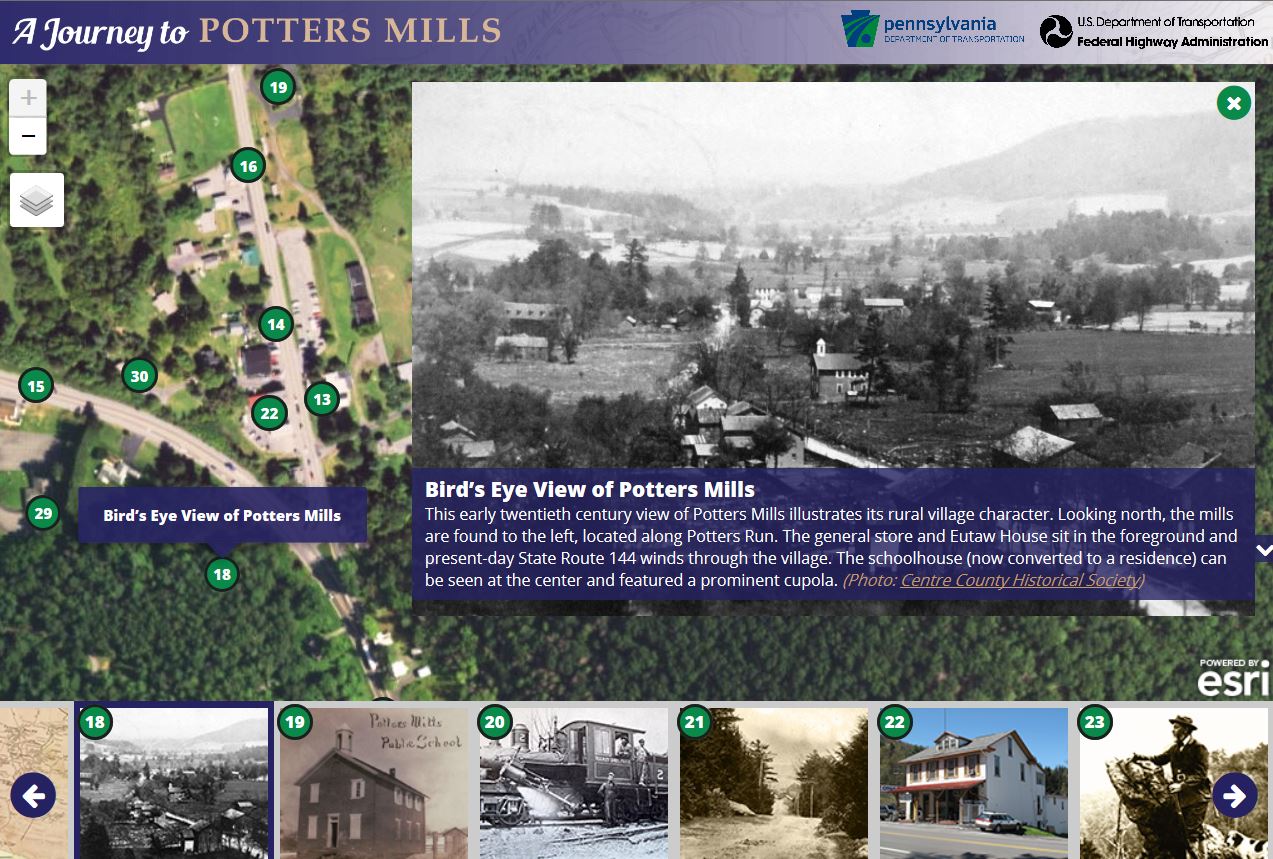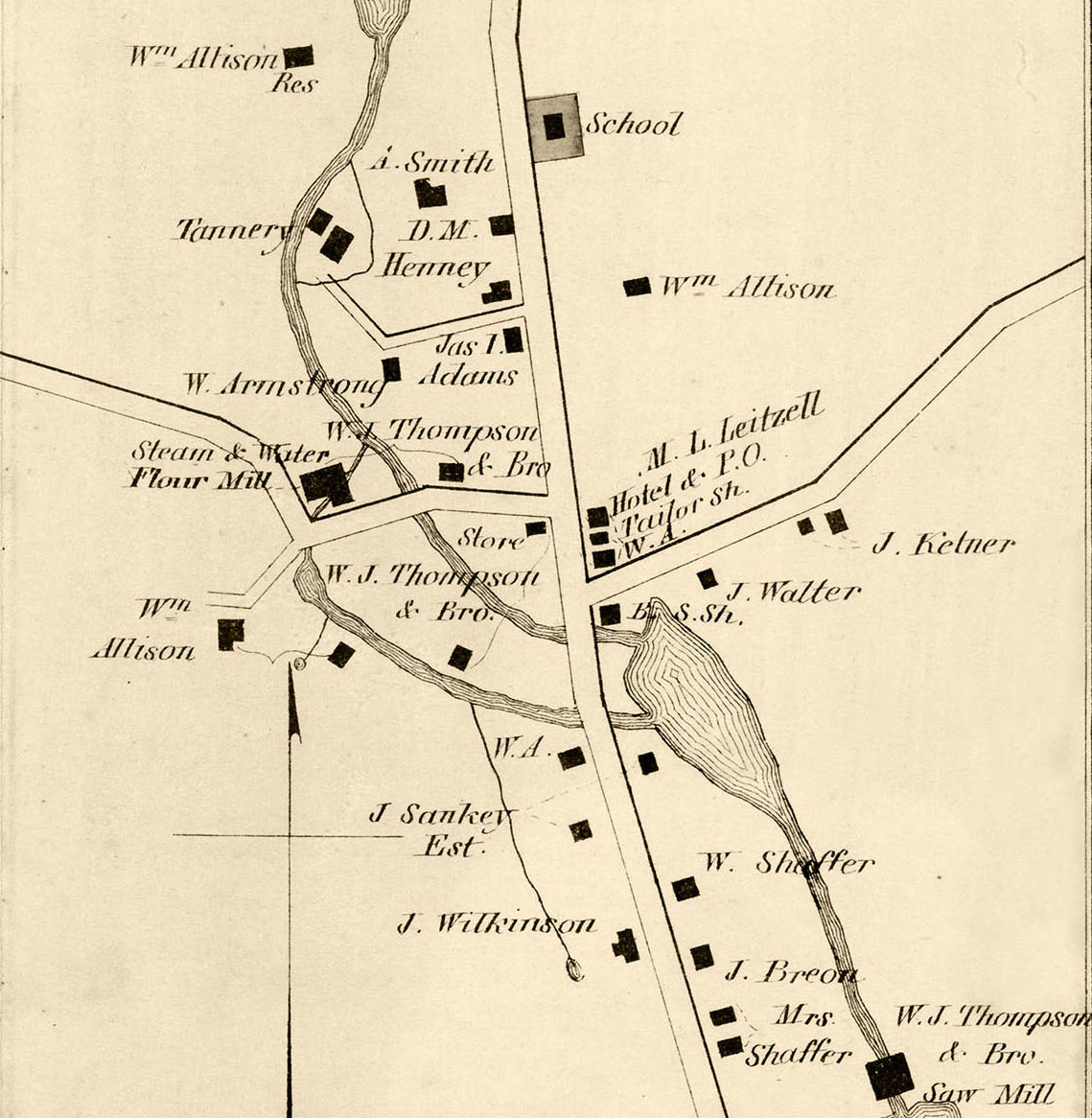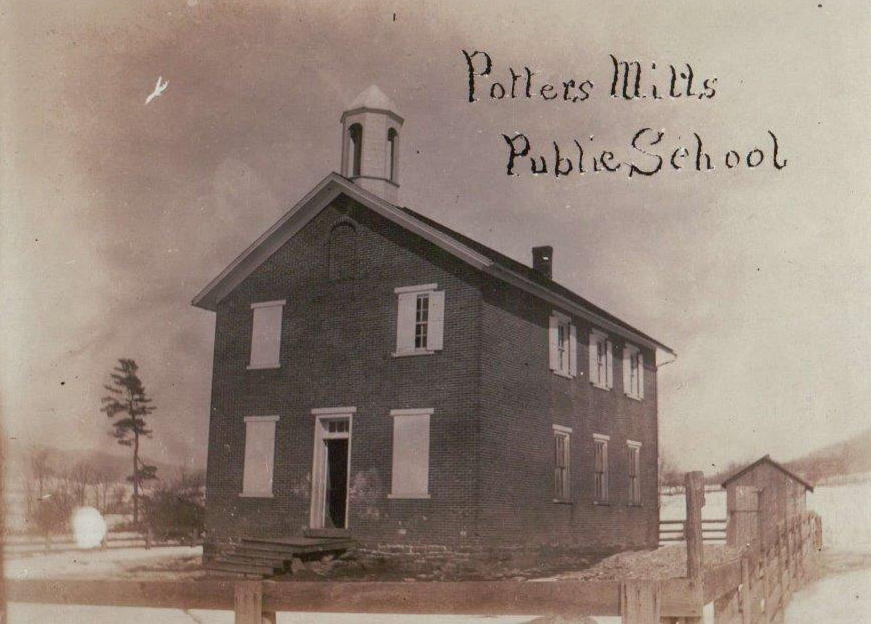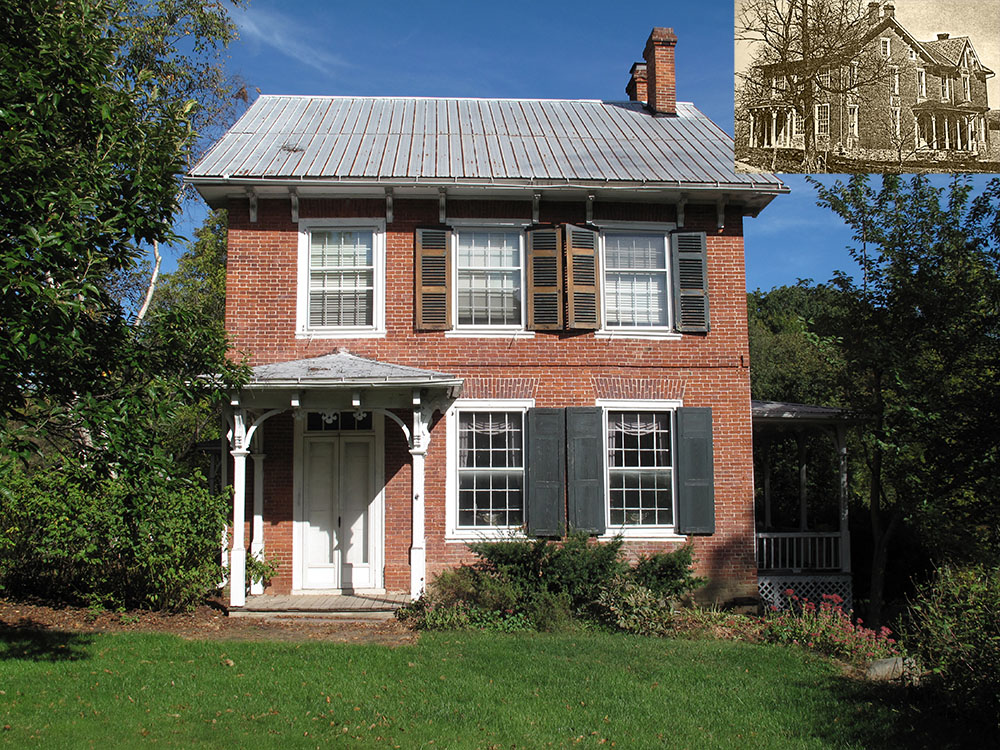Potters Mills? Story Maps? What are these things? This week’s post from guest contributor Charles Richmond will answer these burning questions and talk about this creative way to use 21st century technology to connect people to place and preservation.
For over two hundred years, the village of Potters Mills has witnessed travelers traversing the Seven Mountains between present-day Centre and Mifflin counties. One of the earliest records of this journey dates back to 1775 when Presbyterian Reverend Philip Fithian cautioned travelers about the difficult passage and encouraged them to maintain “patience and perseverance” in their journeys. The topography of this region has shaped both the transportation routes and development patterns. Native American paths were expanded into cart ways, turnpikes into early automobile routes and eventually the modern State Route (SR) 322 highway.
Now you can trace those paths and learn about the history of the region through the “A Journey to Potters Mills” Story Map, a mitigation measures developed as part of PennDOT’s project along SR 322 in Centre County.

Screenshot from the Story Map showing “A Bird’s Eye View of Potters Mills”, a historic photograph provided by the Centre County Historical Society.
Project and Mitigation
The Pennsylvania Department of Transportation (PennDOT) is constructing sections of SR 322 in Potter Township, Centre County. The project is intended to address congestion, safety and alleviate access concerns along the heavily traveled section of SR 322. Many constraints were confronted as part of the project planning process, including cultural resources. The project is located within a section of the National Register-eligible Penns/Brush Valley Rural Historic District (Key #119404). The historic district is noteworthy for its association with agricultural development and its vernacular architecture found on the farms and in the villages of the region, including the village of Potters Mills.
The new roadway alignment resulted in an Adverse Effect on the historic district. The project team sought measures to minimize and mitigate the Adverse Effect finding. A number of mitigation measures were considered, developed, and will be implemented, including a roadside kiosk, context sensitive design elements, and a best practices manual to help guide future projects. A Story Map was included as mitigation, in addition to the more traditional approaches.
What is a Story Map?
For those unfamiliar with the term, a Story Map is a web-based interactive geographic information system (GIS) intended to share information using photographs and text keyed to physical locations. This relatively new online tool has proven effective by government agencies, educational institutions, non-profits and private individuals to share information with public audiences. At the most fundamental level, it is a tool for storytelling and that was the appeal for its use as a mitigation tool. Mitigation must provide measures that are meaningful to the public and equal to the effect to the resource.

Screenshot of A Journey to Potters Mills illustrating the Penns/Brush Valley Rural Historic District. Image by Jerry Clouse, McCormick Taylor, Inc., 2013.
A Story Map offered an opportunity to visualize the project area, share information about historic resources and engage stakeholders. A number of questioned had to be addressed once the decision was made to develop a Story Map as mitigation. Who was the target audience? What technological constraints existed? What places and stories would become part of the map? What types and how many images would be presented as part of the Story Map? Where would the images come from?
Developing the Story
The project team gave careful consideration and thought to all of these subjects. It was decided, based on the scope and nature of the transportation project, that the Story Map would be confined largely to the immediate vicinity of Potters Mills (areas within the Penns/Brush Valley Rural Historic District), with an emphasis on transportation development. The overriding goal was to a present a variety of subjects that could educate, entertain and inform the public.

This detail of the village of Potters Mills (from Beach Nichols’ 1874 Atlas of Centre County, Pennsylvania) is an example of the historic mapping incorporated into the Story Map.
The project team considered a variety of topics to include on the Story Map – architecture, transportation, industry, education, recreation, commerce – to tell the story of Potters Mills and the surrounding community. The mysteries of a lost cemetery and Edgar Allan Poe’s connection to Eutaw House added a little folklore and mystery to the community. This was achieved through historic and current photographs, documents, historic maps and atlases, paintings which all help to tell the story of Potters Mills and the surrounding community. A collection of 33 images are keyed to the interactive map, which shows the Potters Mills area in both street and imagery maps.

This photograph of the public school in Potters Mills is used in Story Map. The photograph was provided by the Penns Valley Area Historical Museum from the Vonnie Henninger Collection.
The Story Map was patterned with inspiration from commercial software developer Esri’s story map templates available through their platform. A Journey To Potters Mills was developed by McCormick Taylor, Inc.’s information technology specialist and software designer Steve Cline. The Story Map is hosted by PennDOT through its Cultural Resources webpage, but it was encouraged that project partners and consulting parties promote the Story Map through their websites and social media.
The Story Map would not have been possible without the contributions of individuals, historical societies and repositories. Public outreach was an important part of the process and served to connect the community to the project. The Centre County Library & Historical Society provided historical documents, including road docket and tax records. Libraries and special collections provided a wealth of maps, portraits, and images. Vonnie Henninger, with the Penns Valley Area Historical Museum, provided a wealth of images. The New York State Museum, Princeton University, Pennsylvania State Library, Centre County Historical Society, DCNR-Bureau of Forestry’s, and Pennsylvania State University’s Special Collections department all made contributions.
A Journey To Potters Mills was made available by PennDOT in December 2016 and has been well-received as a creative mitigation approach using GIS technologies. It is anticipated that Story Maps will continue to be applied as another mitigation tool available to cultural resource professionals and planners in the future.
This week’s guest contributor is Charles Richmond, an architectural historian with McCormick Taylor, Inc. in Harrisburg, PA. Charles has Bachelor of Arts degree in History from Thiel College and Master of Arts degree in American Studies from Pennsylvania State University.
Comment Policy
PHMC welcomes and encourages topic-related comments on this blog. PHMC reserves the right to remove comments that in PHMC’s discretion do not follow participation guidelines.
Commenters and Comments shall be related to the blog post topic and respectful of others who use this site.
Commenters and Comments shall not: use language that is offensive, inflammatory or provocative (this includes, but is not limited to, using profanity, obscene, or vulgar comments); disparage other commenters or people; condone illegal activity; identify the location of known or suspected archeological sites; post personal information in comments such as addresses, phone numbers, e-mail addresses or other contact details, which may relate to you or other individuals; impersonate or falsely claim to represent a person or an organization; make any commercial endorsement or promotion of any product, service or publication.
If you would like to comment on other topics not related to this blog post but related to PHMC, please fill out the PHMC Contact Us Form.

Where is PennDOT’s Cultural Resource sensitivity for Kirks Mills (which IS a National Register Historict District) suffering through the P3 Bridge Replacement Project??
Current plans are to endanger lives and historic buildings by promoting faster speeds and putting guiderails BEHIND the front of iconic Kirks Mill.
Will someone help us? The public process has not been satisfied!
PennDOT Project – Lancaster – SR2002
This bridge is within the 210 acre Kirks Mill National Historic District. We are listed as having 210 acres and 12 buildings. Reference #78002420.
Last paragraph – December 2017?? Typo??
Hi Juli – thanks for catching the typo for us! I’ve corrected the post.
Wonderful !
Was there a village known at Potters Bank near there…or was Potters Mills ever preferred to as Potters Bank ???